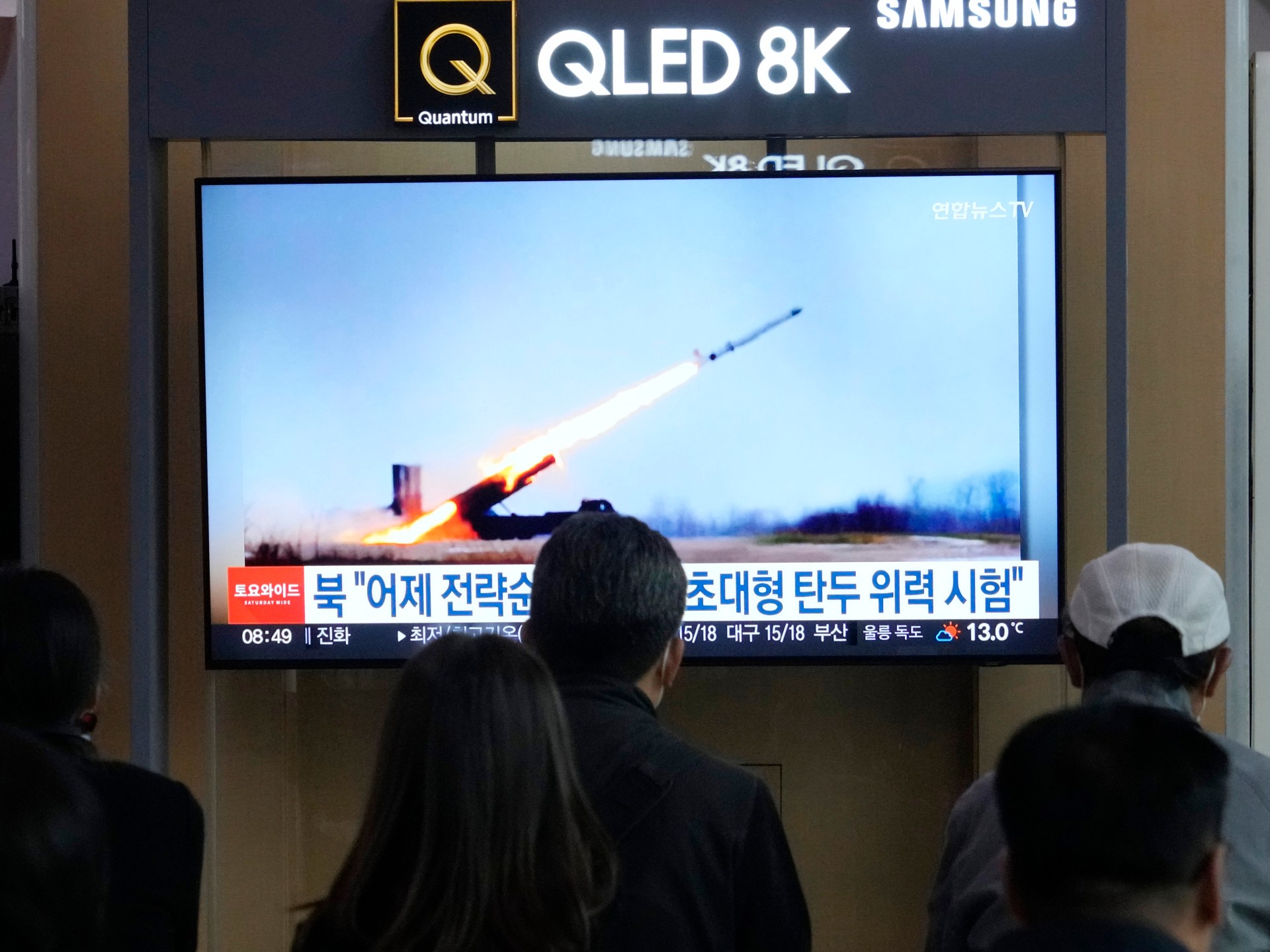Media
COVID-19: Has traditional media shown the way again? – Gulf News

Image Credit: Clint Egbert/Gulf News
The coronavirus pandemic has torn the veil off a long-obscured and frightening reality: Our economies are unconscionably fragile, propped up by low-wage jobs, and our health systems are tissue-thin.
As companies go bankrupt and workers are laid off by the millions, it seems likely that most major economic and cultural institutions will suffer the shock of transition, if not extinction.
There is no dearth of issues where the traditional media should be able to establish permanent superiority over its upstart rivals with a mix of intellectual rigour and compassion
These include the media, which has a key role to play in shaping how we think of and act upon this new world.
Clearly, many periodicals will not survive the loss of revenue from sales and advertising. For better and worse, the landscape of news and opinion looks to become far less diverse.
Small magazines, especially non-profit ones, are most vulnerable.
Old media matters
The social media “influencers” who broadcast conspiracy theories linking COVID-19 to 5G signal masts should long ago have been consigned to history’s wastebasket. It’s about time, too, that the culture of celebrity was fatally undermined.
And one can only hope that the credibility of partisan outlets such as Fox News, which aggressively downplayed news of the pandemic, lethally influencing US President Donald Trump, will be impaired, especially in the eyes of its elderly audience, which is most exposed to the virus.
Media in coronavirus
-
Gulf News Editor-in-Chief: ‘Readers are our most valuable asset… we understand their worries’
-
COVID-19: The media in the time of the coronavirus
-
Staying home got more rewarding with Gulf News free subscription offer
-
Will coronavirus become the newspaper industry’s final battle?
-
Coronavirus: Contactless subscription system from Gulf News online store
The institutions of the much-maligned “legacy media” actually have the best chance of surviving and even flourishing in the future. Rogue challengers to their authority arose in part because the traditional media failed to anticipate or diagnose correctly the financial crisis of 2008.
The claim that globalisation was lifting hundreds of millions of people out of poverty and into a democratising middle class has underpinned much reporting and opinion since the 1990s.
Mechanically boosting globalisation and its beneficiaries, the traditional media was slower than its rivals to catch up with the political upshot of stagnant wages and extreme inequality — a global explosion of demagoguery.
Trump’s tirade against mainstream media
Given the media’s general neglect of the “left-behinds,” it should not be surprising that so many of the latter came to believe in Trump’s charge, repeated by many other demagogues, that mainstream newspapers and television channels peddled only “fake news.”
Many media organs are now trying to be more alert to the needs of the hour. In a startling move, the Financial Times recently called for radical reforms, “reversing the prevailing policy direction of the last four decades.”
This would require that governments “accept a more active role in the economy,” seeing “public services as investments rather than liabilities” and making “labour markets less insecure.”
Exhorting “redistribution,” the FT demanded consideration of “policies until recently considered eccentric, such as basic income and wealth taxes.”
As even the most respectable Western periodicals hastily dump 40 years of free-market pieties, it is clear they were driven more by ideology than a sense of reality and possibility. As recently as November last year, the FT denounced the Labour Party’s relatively modest programme to bring Britain on par with other welfare European states, arguing that it “turns the clock back 40 years.”
Fortunately, the traditional media now has a chance to rebuild its reputation and even augment its essential role in democratic societies.
The experience and fear of death, and the mass destruction of livelihoods, calls for the utmost precision in information and analysis.
There is no dearth of issues where the traditional media should be able to establish permanent superiority over its upstart rivals with a mix of intellectual rigour and compassion.
Imbalances in coverage
There are imbalances in coverage to be addressed. The plight of many people most intensely affected by the crisis — teachers, nurses, cleaners and carers, not to mention the poor, the elderly and the disabled — has very rarely featured in mainstream accounts.
The BBC, for one, has rapidly re-emerged not only as a source of unbiased news and scientific opinion, but also as a champion of the poorly paid people on the frontlines of the struggle against the virus.
As the biggest crisis since the Second World War unfolds, the challenges before the traditional media will be manifold and steep.
Globalisation is swiftly receding into the past, its precarious gains likely to be lost. Billions of people could plunge back into the poverty from which they had only recently (and barely) emerged.
Social unrest, manifested last year in a global wildfire of street protests, is likely to intensify. Moreover, the state, whose urgent intervention in public and private life is being widely demanded and welcomed, could become oppressively overbearing.
It is no exaggeration to say that the fate of many democratic societies will depend on how well the news outlets that survive perform their duty.
— Bloomberg
Pankaj Mishra is a Bloomberg Opinion columnist. His books include “Age of Anger: A History of the Present,” “From the Ruins of Empire: The Intellectuals Who Remade Asia,” and “Temptations of the West: How to Be Modern in India, Pakistan, Tibet and Beyond.”
Media
Social Media Tips for Event Profs – BizBash


Social media changes rapidly—and what worked last year might not work in 2024. (Just look at X’s, or Twitter’s, dramatic revenue loss after many major platforms have stopped posting or advertising on the platform.) So what does work on social media right now, particularly for event professionals?
“We don’t just want our audience to understand what we do—we want them to know who we are,” says Zoe Haynes, the sales and marketing coordinator for PlatinumXP who oversees the event planning agency’s digital marketing. “Social media has evolved into a space for cultivating relationships and building trust. We utilize various platforms to tell stories—the story of an event transformation, behind the scenes with our production crew, or maybe even some fun office shenanigans with our CEO.”
Haynes’ focus on maintaining a consistent, authentic brand presence was a common theme among event professionals we spoke to about how they’re using social media right now. It’s all about “fostering an ongoing connection with our followers,” agrees Elias Contessotto, social media manager for event production company 15|40.
But remember: Not every platform is created equal. Contessotto stresses the importance of tailoring your approach with each platform—but also not being afraid to experiment a bit to ensure you’re staying ahead of trends and maximizing audience engagement. “By creatively testing new tactics, we gauge audience response and efficacy, gradually integrating successful approaches into our channels,” he explains. “This iterative process empowers us to refine our content strategy continuously, adapting to evolving trends and audience preferences.”
In short, “It’s all about meeting your audience where they’re at,” says Taylor Elliot, vice president of marketing and brand strategy for Shepard Exposition Services. “Social media is such a great tool to amplify your brand voice. I always say as marketers we need to create a system that works for our brand even when we are sleeping, and social media is one of the tools to help achieve this.”
LINKEDIN & INSTAGRAM
From our conversations, LinkedIn and Instagram quickly emerged as the two top platforms in the event industry. “Instagram is our go-to for showcasing stunning event photos—however, LinkedIn holds equal if not greater importance in our strategy,” explains Haynes. “While Instagram captures attention with its visual allure, LinkedIn allows us to dive deeper into industry conversations and build relationships with our peers.”
Contessotto likes to target a B2B audience with 15|40’s LinkedIn presence, posting content that focuses on industry insights, professional networking, and collaborations with studios. “We often share static posts similar to those on Instagram, tagging relevant studios to expand our reach,” he says, noting that LinkedIn posts are often reshared by team leaders and executives. “LinkedIn [also] serves as a prime platform for spotlighting press coverage, award nominations, and industry highlights.”
On Instagram, meanwhile, Contessotto expands 15|40’s content to cater to both B2B and B2C audiences. “We share visually engaging posts that highlight our expertise, industry leadership, and collaborations, appealing to a wider range of followers,” he says. “Instagram will have ‘POV’ content, which is much more personal and requires less high-quality tools to tell our story. I came to 15|40 from an influencer background, and from experience, I notice that more amateur content does better on that platform, like using an iPhone for reels rather than a DSLR camera.”
Heather Rouffe, director of sales at Atlas Event Rental, also appreciates the more personal touch that can come with Instagram. “Through that platform, we strive to educate the industry, create brand awareness, and most importantly to us, show the personal side to our company, brand, and rentals,” she explains. “With so much of the human side of things lost in a digital age, being personable and showing the people behind the brand is very important to us. We find the clients really appreciate the behind-the-scenes content and becoming familiar with the Atlas crew.”
On the flip side, though, that doesn’t mean LinkedIn can’t get a little personal. Al Mercuro, senior account director at trade show display company Genesis Exhibits, prioritizes LinkedIn due to the connections he’s been able to make with marketing directors and event directors at companies he’d like to do business with.
“I try to not promote my company as much as my brand by sharing information that will help them in their jobs—I find I get many referrals this way,” Mercuro notes. “I believe it is also a living resume; before I meet with someone, they will often check out my LinkedIn page to learn more about me. The more you can build up your profile and the number of connections you have adds to your value and makes it attractive to have them want to work with you.”
Jonathan Kazarian, the founder and CEO of Accelevents, also uses LinkedIn to build up his personal thought leadership—and therefore, build awareness of his event management software company. “Ninety-nine percent of what I share on LinkedIn is professional,” he says. “I’ll share something about my personal life to build connection, but that’s not my focus with LinkedIn.”
FACEBOOK, TWITTER (X), TIKTOK, & MORE
In a sign of changing times, most of the event professionals we spoke with are not investing much in Facebook or Twitter (now known as X)—though many are still updating them.
“We push out all of our Instagram content to our Facebook, to ensure our followers and intended audiences on both platforms are receiving similar content,” says Contessotto. “We also maintain our Twitter, or X, channel to share some of our event photos, as well as retweet content that clients we work with post that are captured at our events.”
Mercuro finds that Facebook is still an effective way to reach older generations—but for younger generations, he’s found some success marketing events on TikTok. “I am a board member of a nonprofit concert venue, and we needed to attract a younger audience,” he remembers. “I suggested we work with a local university and their marketing classes to take on a project like our organization to give them real-life experience. They chose to use TikTok to reach the younger demographics in our area, and it has been extremely successful.”
Contessotto agrees that TikTok is naturally very Gen Z-oriented, so content should be tailored accordingly. “We’ve noticed that we typically receive high engagement when our content is celebrity-focused,” he says. “Our team is constantly working to balance out our TikTok pages to include viral content, as well as videos that highlight our diverse portfolio of work to attract the right kind of audience.”
Haynes says she’s still exploring TikTok’s potential for Platinum XP. “I’ve noticed its popularity as a discovery platform,” she says. “It’s a great tool for driving awareness, but we should also consider whether our target audience is active on TikTok.” One tool that Haynes does invest time in? Pinterest. “It’s a powerful tool for SEO purposes. Its visual nature allows us to drive awareness to our website through captivating photos. By sparking curiosity, we encourage users to click through and explore further.”
Media
North Korea conducts test on new ‘super-large warhead’: State media – Al Jazeera English


Pyongyang says new warhead designed for cruise missiles, adding that a new anti-aircraft rocket was also tested.
North Korea has conducted a test on a “super-large warhead” designed for a strategic cruise missile, state media reports, adding that it also launched a new type of anti-aircraft missile.
“The DPRK Missile Administration has conducted a power test of a super-large warhead designed for ‘Hwasal-1 Ra-3’ strategic cruise missile”, KCNA news agency reported on Saturday, referring to North Korea by an abbreviation for its official name – Democratic People’s Republic of Korea.
North Korea also carried out a test launch on Friday afternoon of a “Pyoljji-1-2”, which state media said was a “new-type anti-aircraft missile”.
KCNA added that “a certain goal was attained” through the test without providing further details.
The weapons tests were part of the “regular activities of the administration and its affiliated defence science institutes”, KCNA reported, referencing the operation of “new-type weapon systems”.
The tests “had nothing to do with the surrounding situation”, KCNA added, but did not give any further information.
In early April, North Korea said it had tested a new medium-to-long-range solid-fuel hypersonic missile, with state media sharing a video of it being launched as leader Kim Jong Un looked on.
Cruise missiles are among a growing collection of North Korean weapons designed to overwhelm regional missile defences. They supplement the North’s vast arsenal of ballistic missiles, including intercontinental variants, which are said to be aimed at the continental United States.
Analysts say anti-aircraft missile technology is an area where North Korea could benefit from its deepening military cooperation with Russia, as the two countries align in the face of their separate, intensifying confrontations with the US.
The US and South Korea have accused the North of providing artillery shells and other equipment to Russia to help extend its warfighting ability in Ukraine.
Since its second nuclear test in 2009, Pyongyang has been under heavy international sanctions, but the development of its nuclear and weapons programmes has continued unabated.
Media
Lawmakers pan Ben Gvir for ‘unforgivable’ tweet on alleged Israeli strike on Iran – The Times of Israel


Italian FM says Israel gave US ‘last minute’ warning about drone attack on Iran
CAPRI, Italy (AP) — The United States told the Group of Seven foreign ministers that it received “last minute” information from Israel about a drone action in Iran early this morning, Italy’s foreign minister says.
Italian Foreign Minister Antonio Tajani, who chaired the meeting of ministers of industrialized countries, says the United States provided the information at session this morning that was changed at the last minute to address the suspected attack.
Tajani says the US informed the G7 ministers that it had been “informed at the last minute” by Israel about the drones. “But there was no sharing of the attack by the US. It was a mere information.”
Early Friday, Iran fired air defenses at a major air base and a nuclear site near the central city of Isfahan after spotting drones, part of an apparent Israeli attack in retaliation for Tehran’s unprecedented drone-and-missile assault on the country last weekend.
In a communique following the three-day meeting, the ministers urged the parties “to prevent further escalation.”
-
Media12 hours ago
DJT Stock Rises. Trump Media CEO Alleges Potential Market Manipulation. – Barron's
-
Media14 hours ago
Trump Media alerts Nasdaq to potential market manipulation from 'naked' short selling of DJT stock – CNBC
-
Investment13 hours ago
Private equity gears up for potential National Football League investments – Financial Times
-
News24 hours ago
Best in Canada: Jets Beat Canucks to Finish Season as Top Canadian Club – The Hockey News
-
News23 hours ago
Ontario Legislature keffiyeh ban remains, though Ford and opposition leaders ask for reversal – CBC.ca
-



 Sports17 hours ago
Sports17 hours ago2024 Stanley Cup Playoffs 1st-round schedule – NHL.com
-
Business23 hours ago
RCMP national security team investigating Yellowhead County pipeline rupture: Alberta minister – Global News
-



 Investment22 hours ago
Investment22 hours agoWant to Outperform 88% of Professional Fund Managers? Buy This 1 Investment and Hold It Forever. – The Motley Fool








